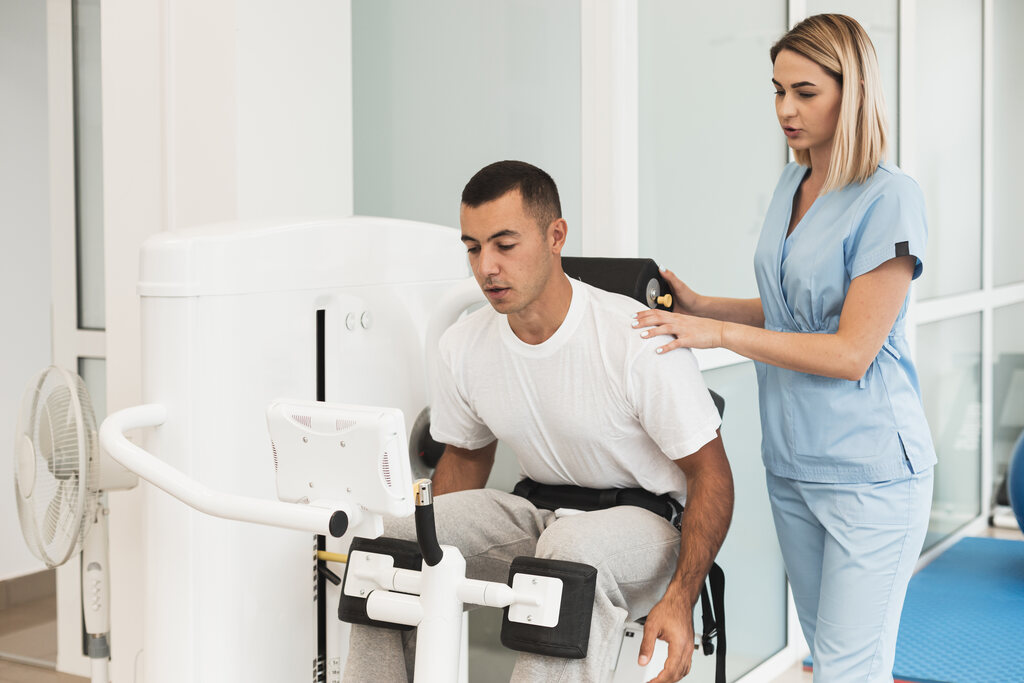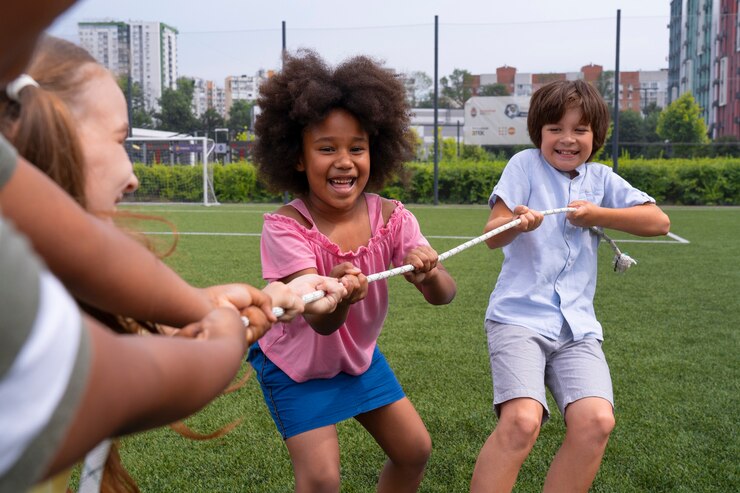In the quest to foster holistic development in children with autism, integrating physical activity into their daily routines stands out as a pivotal strategy.
Physical exercise not only bolsters physical health but also plays a crucial role in enhancing social skills, reducing stress, and improving cognitive function.
However, encouraging regular physical activity in children with autism can present unique challenges, including sensory sensitivities and difficulties in understanding and following instructions.
This is where Applied Behavior Analysis (ABA) therapy, a leading approach in autism intervention, comes into play. By harnessing ABA principles, caregivers and educators can create engaging and effective fitness routines tailored to the unique needs of children with autism.
This article delves into the ways ABA techniques can promote physical activity, offering practical examples and strategies designed to ignite a passion for fitness in children with autism.
Understanding ABA Therapy
Before diving into specific strategies, it’s essential to grasp what ABA therapy and autism entail. ABA therapy and autism is a research-based intervention that apply our understanding of how behavior works to real-life situations.
The goal of ABA therapy and autism is to increase behaviors that are helpful and decrease behaviors that are harmful or affect learning. It involves breaking down complex skills into smaller, manageable steps, teaching these steps systematically, and applying reinforcement strategies to encourage desirable behaviors.
This methodical approach makes ABA therapy and autism particularly effective in teaching new skills and behaviors to children with autism.
Setting Achievable Fitness Goals
The first step in promoting physical activity is setting clear, achievable fitness goals. Goals should be tailored to the child’s current abilities and interests to ensure they are both attainable and engaging.
For example, if a child enjoys water, swimming could be an excellent physical activity to explore. Goals could range from attending a weekly swimming class to developing specific swimming strokes.
Utilizing ABA’s principle of task analysis, complex physical activities can be broken down into smaller, teachable components.
If the goal is for the child to learn to play catch, the task can be broken down into identifying the necessary steps, such as standing in the correct position, focusing on the ball, and moving the hands to catch. Each step can then be taught separately, using reinforcement to encourage success at every stage.
Reinforcement to Increase Motivation
Reinforcement is a core component of ABA therapy and can significantly increase a child’s motivation to participate in physical activities.
Positive reinforcement involves providing something desirable to the child immediately after they display a target behavior, thereby increasing the likelihood of the behavior recurring.
For physical activities, reinforcements could range from verbal praise and clapping to more tangible rewards like stickers or a small amount of extra screen time.
It’s crucial to identify what motivates the individual child, as this can vary widely. Some children may be motivated by social praise, while others may find tangible rewards more compelling.
Additionally, varying the types of reinforcement used can help maintain the child’s interest and motivation over time.
Tailoring Activities to Individual Interests and Capabilities
For physical activity to be sustainable, it must resonate with the child’s interests and be within their capability to perform.
ABA therapy emphasizes the importance of individualized strategies. By observing the child’s natural inclinations, caregivers can select physical activities that the child is naturally drawn to, which could include anything from dancing to hiking.
Moreover, ABA principles can help adapt activities to meet the child’s sensory needs and preferences. For children who are sensitive to loud noises, for example, outdoor activities in a quiet park may be preferable to a noisy gym environment.
Similarly, for a child who seeks proprioceptive input, activities like climbing or martial arts may be particularly satisfying.
Creating a Structured Routine
Children with autism often thrive in structured environments. Creating a predictable routine around physical activity can help reduce anxiety and resistance to participation.
Using visual schedules or timers to signal the start and end of exercise sessions can provide the structure and predictability that children with autism find comforting.
Additionally, ABA therapy’s emphasis on consistency and repetition can be applied to establish a regular exercise routine.
Starting with short, manageable sessions and gradually increasing duration or intensity can help build endurance and a positive attitude toward physical activity.
Sensory-Friendly Sports and Activities
Integrating sensory-friendly sports and activities is another effective strategy to encourage physical activity. Sensory-friendly activities are designed to be less overwhelming and more accessible for individuals with sensory processing challenges.
For instance, sensory-friendly sports might involve using softer, brightly colored equipment or participating in activities in a sensory-modified environment.
Yoga, for example, can be an excellent sensory-friendly activity that promotes physical fitness while also offering opportunities for relaxation and sensory integration.
The predictable, flowing movements of yoga can be soothing for children with autism, and the practice can be adapted to suit a range of abilities and sensory preferences.
Practical Examples and Strategies
1. Dance Party at Home: Turn on some favorite music and have a dance party. This activity encourages gross motor movement, and the familiar setting makes it less intimidating.
2. Obstacle Courses: Create simple obstacle courses in the backyard or living room using household items. This activity can be easily tailored to match the child’s motor skills and is an enjoyable way to practice following directions and problem-solving.
3. Nature Walks with a Purpose: Go on nature walks looking for specific items (e.g., leaves of different colors). This adds an element of a scavenger hunt to the physical activity, making it more engaging.
4. Yoga with Visual Cards: Use visual cards to teach different yoga poses. This combines the calming effects of yoga with a structured learning tool that children with autism often find helpful.
5. Swimming with Goals: Incorporate specific goals into swimming activities, such as swimming to retrieve floating toys. This makes the activity goal-oriented and provides immediate reinforcement upon completion.
Enhancing Social Skills Through Team Sports
Team sports can be a valuable tool for enhancing social skills alongside physical fitness. While the prospect of participating in team sports might seem daunting for some children with autism, with the right support and adaptations, it can offer a structured opportunity to develop communication, teamwork, and empathy.
Strategies such as choosing less competitive and more cooperative sports, providing clear, visual explanations of rules, and celebrating team efforts over individual performance can make team sports more accessible.
This section would offer insights into how caregivers and educators can facilitate positive team sports experiences, using ABA principles to reinforce social skills and cooperation in a group setting.
Building Confidence and Independence
Physical activity, guided by the principles of ABA, can play a significant role in building confidence and independence in children with autism.
Achieving fitness goals, mastering new skills, and overcoming physical challenges can significantly boost self-esteem. Furthermore, as children learn to follow routines and participate in activities independently, they develop a sense of autonomy.
This section could delve into strategies for gradually increasing the complexity of physical activities and encouraging self-initiation and self-monitoring in exercise tasks.
It would highlight the importance of celebrating milestones, no matter how small, and using these achievements as building blocks for further development in physical fitness and personal growth.
Conclusion
Promoting physical activity in children with autism through ABA principles is not only about improving physical fitness; it’s also about enhancing overall well-being, social skills, and quality of life.
By setting achievable fitness goals, utilizing reinforcement to increase motivation, tailoring activities to individual interests and capabilities, creating a structured routine, and integrating sensory-friendly sports, caregivers and educators can develop comprehensive, engaging physical activity programs.
These strategies underscore the importance of a personalized approach, leveraging the strengths and interests of children with autism to foster a lifelong love of physical activity.
Through patience, creativity, and the application of ABA therapy techniques, encouraging regular physical activity in children with autism can be a rewarding journey that yields significant benefits for their health and development.












